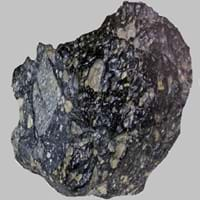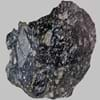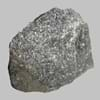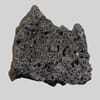Definition
Granite is a very hard, granular, crystalline igneous rock which consists mainly of quartz, mica, and feldspar and is often used as building stone
Sandstone is defined as a rock which is composed of sand-sized grains of various minerals mostly of uniform size and often are smooth and rounded
Discoverer
Unknown
Unknown
Etymology
From Italian granito, which means grained rock, from grano grain, and from Latin granum
From its composition, sand and stone
Class
Igneous Rocks
Sedimentary Rocks
Sub-Class
Durable Rock, Hard Rock
Durable Rock, Hard Rock
Group
Plutonic
Not Applicable
Other Categories
Coarse Grained Rock, Opaque Rock
Coarse Grained Rock, Fine Grained Rock, Opaque Rock
Texture
Granular, Phaneritic
Clastic, Granular, Rough
Color
Black, Grey, Orange, Pink, White
Beige, Black, Brown, Colourless, Cream, Dark Brown, Green, Grey, Light Green, Light to Dark Grey, Pink, Red, White, Yellow
Durability
Durable
Durable
Scratch Resistant
Yes
Yes
Appearance
Veined or Pebbled
Rough
Interior Uses
Countertops, Decorative Aggregates, Entryways, Floor Tiles, Flooring, Homes, Hotels, Interior Decoration, Kitchens, Stair Treads
Countertops, Decorative Aggregates, Interior Decoration
Exterior Uses
As Building Stone, As Facing Stone, Bridges, Paving Stone, Garden Decoration, Near Swimming Pools, Office Buildings, Resorts
As Building Stone, As Facing Stone, Office Buildings
Other Architectural Uses
Curbing
Curbing
Construction Industry
As Dimension Stone
Cement Manufacture, Construction Aggregate, for Road Aggregate, Production of Glass and Ceramics, Raw material for the manufacture of mortar
Medical Industry
Not Yet Used
Not Yet Used
Antiquity Uses
Monuments, Sculpture, Small Figurines
Artifacts, Monuments, Sculpture
Commercial Uses
Curling, Gemstone, Laboratory bench tops, Tombstones, Used in aquariums
An Oil and Gas Reservoir, In aquifers, Petroleum reservoirs, Soil Conditioner, Source of Magnesia (MgO), Tombstones, Used in aquariums
Types
Igneous Protolith Granite, Sedimentary Protolith Granite, Mantle Granite, Anorogenic Granite, Hybrid Granite, Granodiorite and Alkali Feldspar Granite
Grey Sandstones, Crystallized Sandstones, Hard Sandstones , Carbonate Cemented Sandstones and Ganister
Features
Available in Lots of Colors and Patterns, It is One of the Oldest, Strongest and Hardest Rock
Available in Lots of Colors and Patterns, Generally rough to touch, Very fine grained rock
Archaeological Significance
Famous Monuments
Agia Sophia in Istanbul, Turkey, Blue Domed Church in Santorini, Greece, Blue Mosque in Istanbul, Charminar in Hyderabad, India, Diana, Princess of Wales Memorial Fountain in London, UK, Ephesus in Turkey, Georgia Guidestones in Georgia, US, Hermitage in Saint Petersburg, Khajuraho Temples, India, Mahabalipuram in Tamil Nadu, India, Mysore Palace in Karnataka, India, Signers Monument in Augusta, Georgia, Statue of Liberty in New York, USA, Taj Mahal in Agra, India, Tower Bridge in London, Vietnam Veterans Memorial in Washington, US, Washington Monument, US
Abu Simbel in Egypt, Agia Sophia in Istanbul, Turkey, Angkor Wat in Cambodia, Buland Darwaza in Agra, India, Chhatrapati Shivaji Terminus in Maharashtra, India, Dom in Berlin, Great Sphinx at Giza, Egypt, Hawa Mahal in Jaipur, India, Humayun's Tomb in Delhi, India, India Gate in Delhi, India, Jama Masjid in Delhi, India, Khajuraho Temples, India, Leh Palace in Leh, India, Lotus Temple in New Delhi, India, Luxor Temple in Egypt, Machu Picchu in Peru, Neuschwanstein in Bavaria, Petra in Jordan, Qutb Minar in India, Red Fort in Delhi, India, Sanchi Stupa in India
Famous Sculptures
Avukana Buddha Statue in Sri Lanka, Lincoln Memorial in America, Mount Rushmore National Memorial in South Dakota, US, The Colossal Red Granite Statue of Amenhotep III in Karnak, Egypt
Ajanta Caves in Maharashtra, India, Elephanta Caves in Maharashtra, India, Mount Rushmore National Memorial in South Dakota, US
Pictographs
Not Used
Not Used
Petroglyphs
Not Used
Not Used
Formation
Granite is an intrusive igneous rock which is very hard, crystalline and is visibly homogeneous in texture and forms by melting of continental rocks
Sandstone is a sedimentary rock which forms from cemented sand-sized clasts. It forms when sand layers are buried under sediments of sand.
Mineral Content
Amphibole, Biotite, Feldspar, Hornblade, Micas, Muscovite or Illite, Plagioclase, Pyroxene, Quartz
Calcite, Clay, Clay Minerals, Feldspar, Micas, Quartz
Compound Content
Aluminium Oxide, CaO, Iron(III) Oxide, FeO, Potassium Oxide, MgO, MnO, Sodium Oxide, Phosphorus Pentoxide, Silicon Dioxide, Titanium Dioxide
Aluminium Oxide, CaO, Iron(III) Oxide, Potassium Oxide, MgO, Sodium Oxide, Silicon Dioxide
Types of Metamorphism
Burial Metamorphism, Cataclastic Metamorphism
Not Applicable
Types of Weathering
Biological Weathering
Biological Weathering, Chemical Weathering, Mechanical Weathering
Types of Erosion
Chemical Erosion, Sea Erosion, Water Erosion
Chemical Erosion, Coastal Erosion, Glacier Erosion, Sea Erosion, Water Erosion, Wind Erosion
Grain Size
Large and Coarse Grained
Coarse or Fine
Fracture
Not Available
Conchoidal
Porosity
Less Porous
Highly Porous
Luster
Dull to Grainy with Sporadic parts Pearly and Vitreous
Dull
Cleavage
Not Available
Perfect
Toughness
Not Available
2.6
Specific Gravity
2.6-2.7
2.2-2.8
Transparency
Opaque
Opaque
Density
2.65-2.75 g/cm3
2.2-2.8 g/cm3
Resistance
Heat Resistant, Wear Resistant
Heat Resistant, Impact Resistant, Pressure Resistant
Deposits in Eastern Continents
Asia
China, India, Iran, Saudi Arabia, Sri Lanka, Taiwan, Thailand, Turkey, Vietnam
China, India, Kazakhstan, Mongolia, Russia, Thailand, Uzbekistan
Africa
Angola, Egypt, Madagascar, Namibia, Nigeria, South Africa
Namibia, Nigeria, South Africa
Europe
Austria, Belgium, Finland, France, Germany, Italy, Norway, Sardinia, Spain, Switzerland, The Czech Republic, Venezuela
Austria, Denmark, Germany, Great Britain, Netherlands, Norway, Poland, Sweden, Switzerland, United Kingdom
Others
Not Yet Found
Greenland
Deposits in Western Continents
North America
Canada, USA
Canada, USA
South America
Not Yet Found
Brazil
Deposits in Oceania Continent
Australia
Not Yet Found
New South Wales, New Zealand
Granite vs Sandstone Characteristics
Though some rocks look identical, they have certain characteristics which distinguish them from others. Characteristics of rocks include texture, appearance, color, fracture, streak, hardness etc. Granite vs Sandstone characteristics assist us to distinguish and recognize rocks. Also you can check about Properties of Granite and Properties of Sandstone. Learn more about Granite vs Sandstone in the next section. The interior uses of Granite include Countertops, Decorative aggregates, Entryways, Floor tiles, Flooring, Homes, Hotels, Interior decoration, Kitchens and Stair treads whereas the interior uses of Sandstone include Countertops, Decorative aggregates and Interior decoration. Due to some exceptional properties of Granite and Sandstone, they have various applications in construction industry. The uses of Granite in construction industry include As dimension stone and that of Sandstone include Cement manufacture, Construction aggregate, For road aggregate, Production of glass and ceramics, Raw material for the manufacture of mortar.
More about Granite and Sandstone
Here you can know more about Granite and Sandstone. The life cycle of a rock consists of formation of rock, composition of rock and transformation of rock. The composition of Granite and Sandstone consists of mineral content and compound content. The mineral content of Granite includes Amphibole, Biotite, Feldspar, Hornblade, Micas, Muscovite or Illite, Plagioclase, Pyroxene, Quartz and mineral content of Sandstone includes Calcite, Clay, Clay Minerals, Feldspar, Micas, Quartz. You can also check out the list of all Igneous Rocks. When we have to compare Granite vs Sandstone, the texture, color and appearance plays an important role in determining the type of rock. Granite is available in black, grey, orange, pink, white colors whereas, Sandstone is available in beige, black, brown, colourless, cream, dark brown, green, grey, light green, light to dark grey, pink, red, white, yellow colors. Appearance of Granite is Veined or Pebbled and that of Sandstone is Rough. Properties of rock is another aspect for Granite vs Sandstone. Hardness of Granite and Sandstone is 6-7. The types of Granite are Igneous Protolith Granite, Sedimentary Protolith Granite, Mantle Granite, Anorogenic Granite, Hybrid Granite, Granodiorite and Alkali Feldspar Granite whereas types of Sandstone are Grey Sandstones, Crystallized Sandstones, Hard Sandstones , Carbonate Cemented Sandstones and Ganister. Streak of rock is the color of powder produced when it is dragged across an unweathered surface. The streak of Granite and Sandstone is white. The specific heat capacity of Granite is 0.79 kJ/Kg K and that of Sandstone is 0.92 kJ/Kg K. Depending on the properties like hardness, toughness, specific heat capacity, porosity etc., rocks are resistant to heat, wear, impact, etc.Granite is heat resistant, wear resistant whereas Sandstone is heat resistant, impact resistant, pressure resistant.





